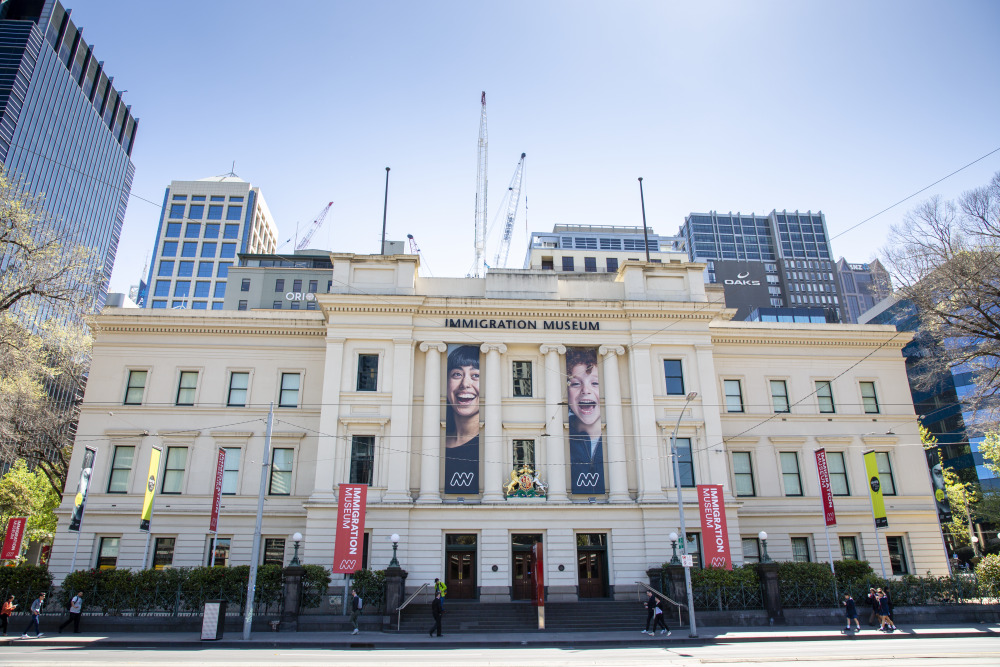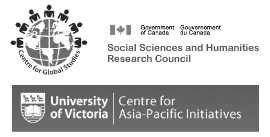
Immigration Museum, Old Customs House, Melbourne, Australia Source: Museums Victoria / Photographer: Rodney Start Copyright Museums Victoria 2018
If managing a museum is difficult, managing an assembly of scientists, curators, historians, collection managers, conservators, and community collaborators across a network of museums must be more challenging still. Moya McFadzean, curator of Migration and Cultural Diversity at the Museums Victoria Research Institute, knows that better than most. In the past year, the Institute, which provides the connective tissue between the three museums which form Museums Victoria in Melbourne, has been reframing around principles of interdisciplinary work and collaboration with First Peoples. This Institute is to be, she explains, “a gathering place for the diversity of the research, and for the pragmatics of a lot of the real outcomes. […] It gives our communications team something very clear as an identity to shout into the public space.” After over 165 years of collective operation, Museums Victoria is determined to continue to evolve. McFadzean notes, “When you’ve been in a curatorial position for quite some time, you have to be able to reflect and self-analyze and keep evolving.”
Like other global institutions, Museums Victoria has sought to center First Nations community collaboration, as the relationship of museum to artifact is reassessed and redefined. While policies such as artifact repatriation or re-presentation have been pursued vigorously, melding the missions of multi-disciplinary, multi-subject and multi-community projects is challenging. McFadzean says, “It’s been talked about a lot, and it’s something that’s quite hard to achieve. In the organization we’ve got scientists, historians, curators, lots of people doing their own work, and then trying to bring some of that together. There have been exhibitions with scientific knowledge overlaid with First Peoples’ cultural knowledge, so that that intersection is happening more and more, which is really fantastic.” One such approach in the past year has been developing ideas for place-based work, in which scholars from museums and communities across the network have been invited to apply their specialties to precise geographic spaces and timeframes. The first example, focusing on the nineteenth century gold rush to Victoria, proposes to examine the region “from a geological point of view, from a migrations point of view, from a technologies point of view. And of course, the gold rush also resulted in a very rapidly accelerated dispossession of First Peoples.”
McFadzean offers the museum at which most of her work is presented the Immigration Museum in Melbourne, as an example of the evolving thinking. In the 1990s, migration stories were usually restricted to the linear movement of permanent immigrants. In recent years, however, focus has expanded to include the movements of transient populations around the Asia-Pacific, as well as different perspectives on categories of migrant identity, “opening it up so that it will be more than ethnicity as a source of identity.” Further, collaboration with immigrant and First Peoples’ communities has involved openness to new storytelling perspectives. McFadzean sums up the shift, both in the Museums Victoria Research Institute and in museological practice more broadly: “It’s gone from museums telling other people’s stories to facilitating a platform for people to tell their own stories, have their own authority and in voices of authenticity.”
That sort of grassroots involvement is exemplified in the Research Institute’s new partnership with the Past Wrongs, Future Choices project, which came about rather serendipitously. McFadzean has recently collaborated with Nikkei Australia member Andrew Hasegawa, whose donation of artifacts formed the basis for a display at the Immigration Museum featuring his great grandfather, a nineteenth-century immigrant and Second World War-era internee. Through this connection, McFadzean came to the attention of project lead Jordan Stanger-Ross, an acquaintance of Hasegawa. The two eagerly reached out to her. McFadzean is excited to expand the Research Institute’s global network and to collaborate with PWFC’s Artists in Residence. Though the Nikkei population of Australia is relatively small, owing partly to the prewar White Australia policy, McFadzean foresees broader social implications: “We’ve got Italian internee stories, German internee stories, but until the Hasegawa collection, we had no Japanese internee stories. It was certainly on the radar, but not represented. […] I’m interested in utilizing the specific subject of Japanese internment to expand the broader issues that we’re interested in […] For me, it’s about taking a particular experience and exploding that out in terms of those broader themes of citizenship, dispossession, prejudice, and identity.”
This article was written by Aaron Stefik, from an interview with Museums Victoria Migration and Cultural Diversity Senior Curator Moya McFadzean

 Instagram
Instagram